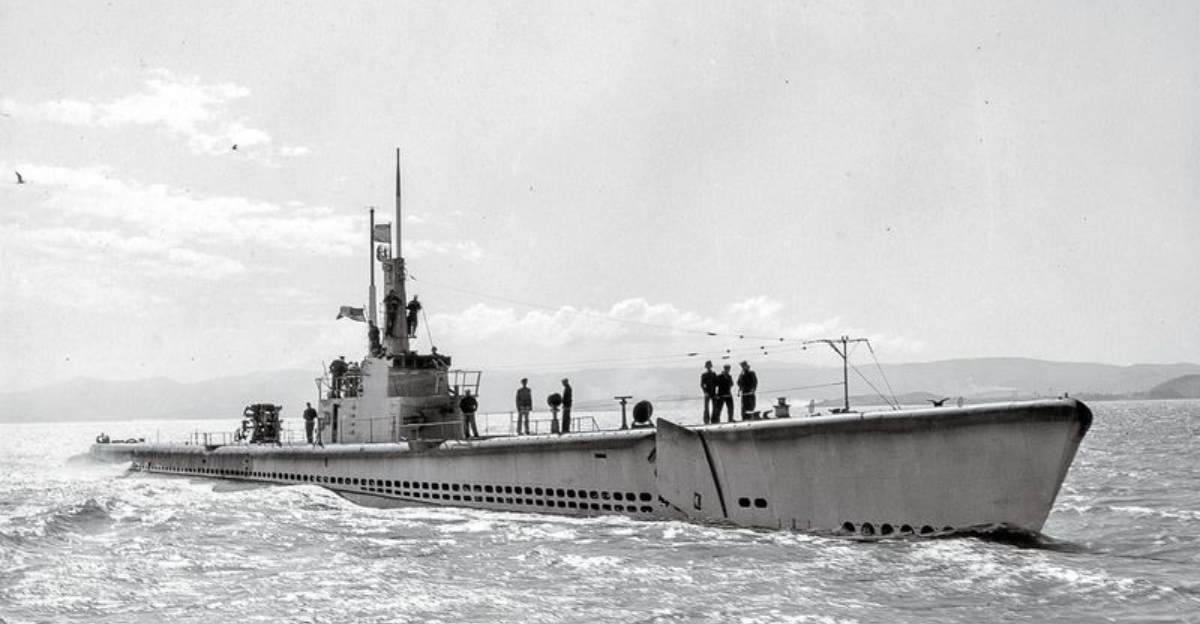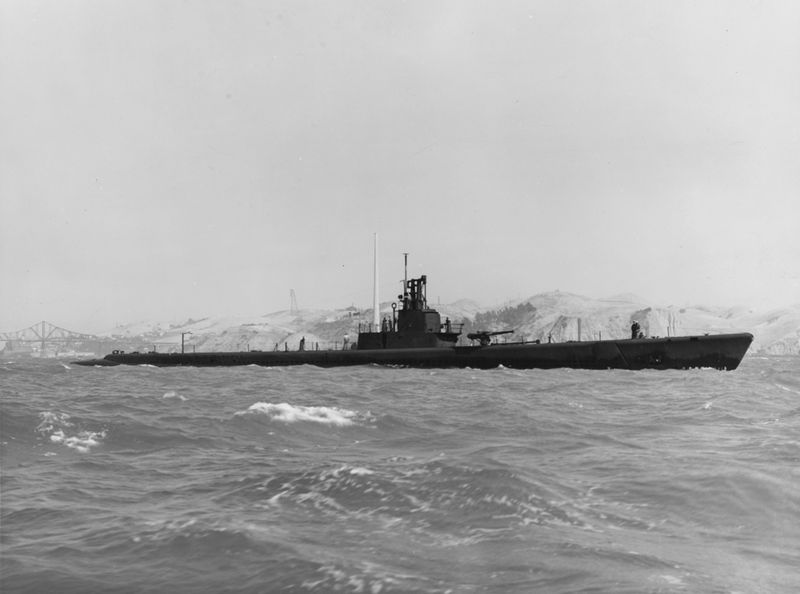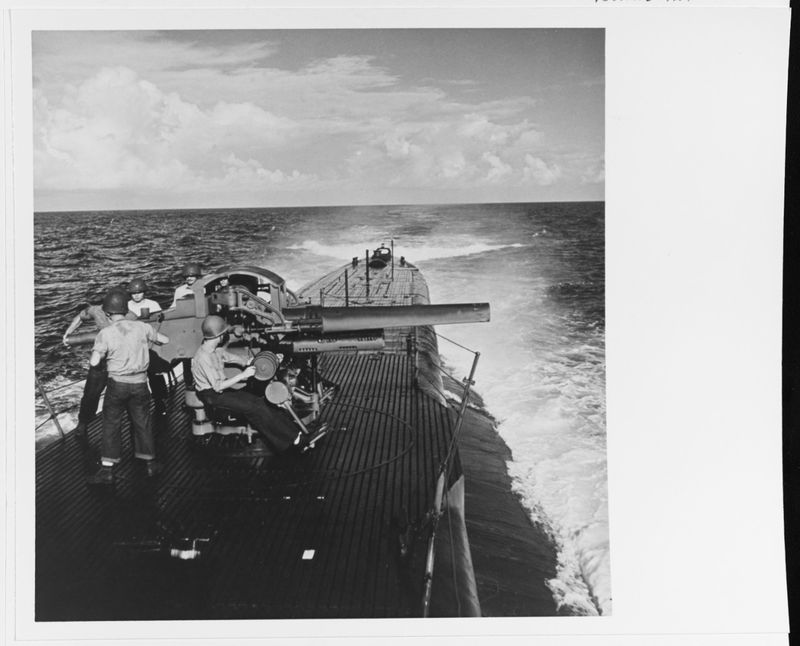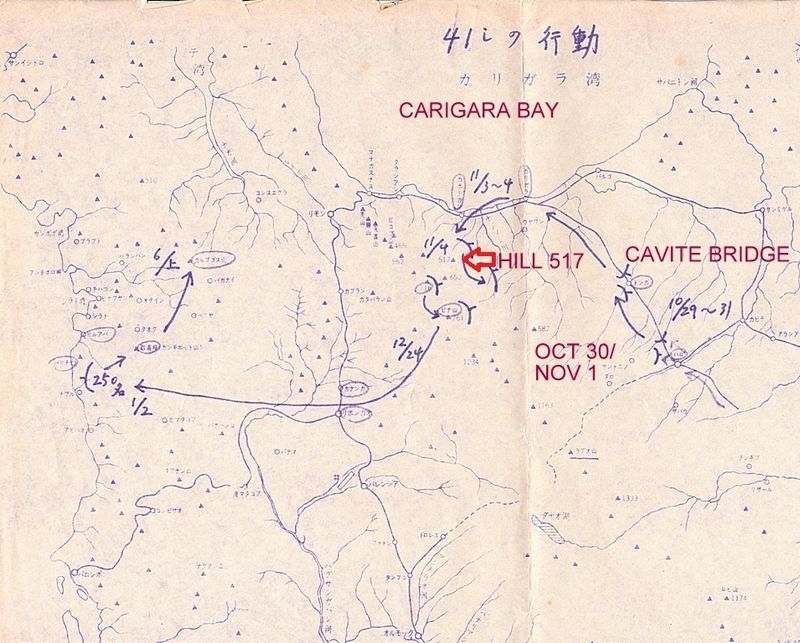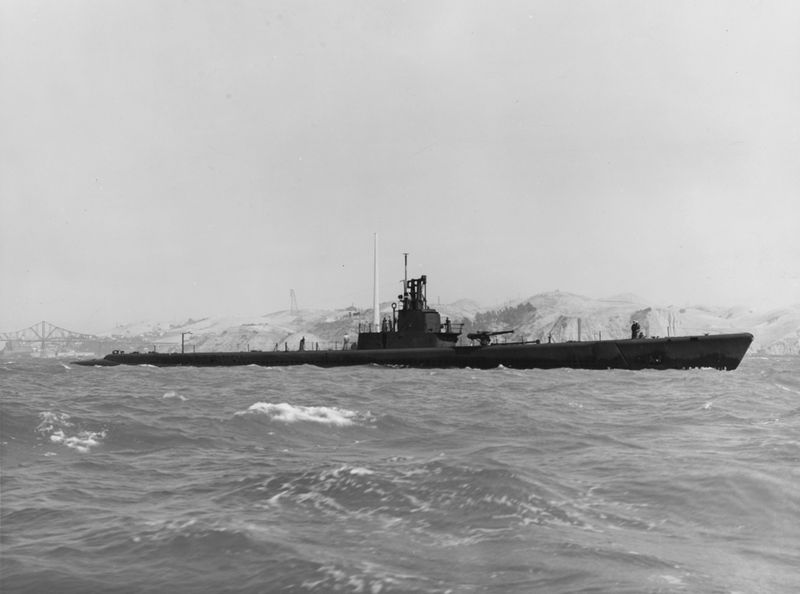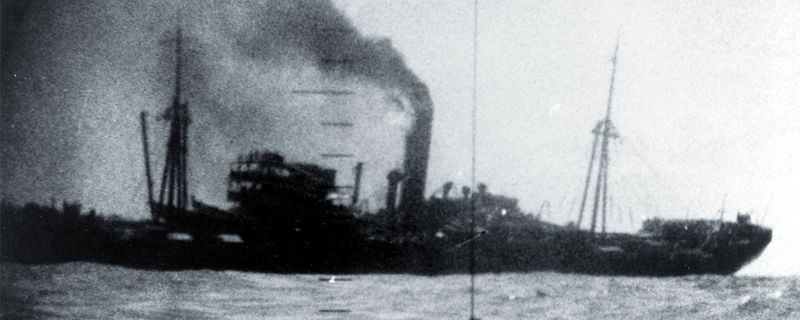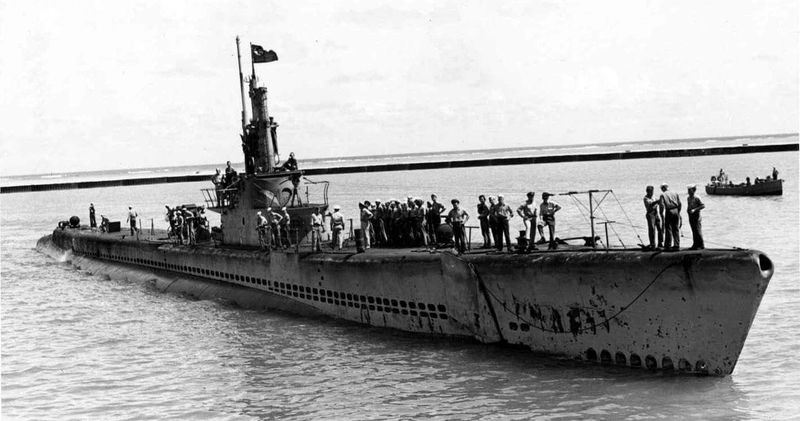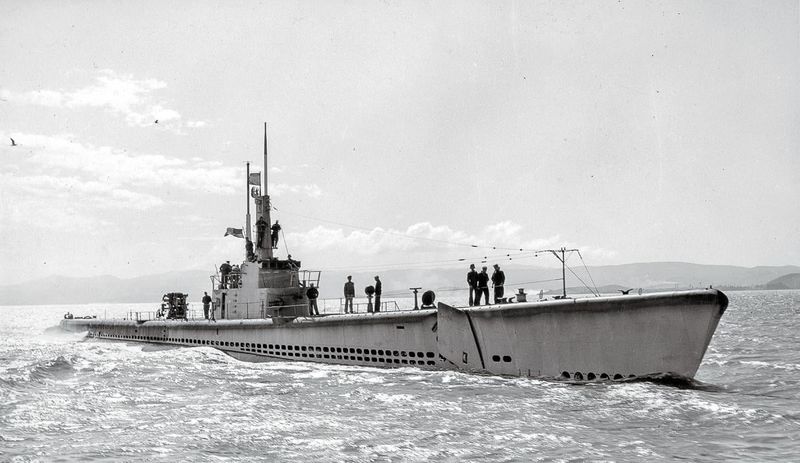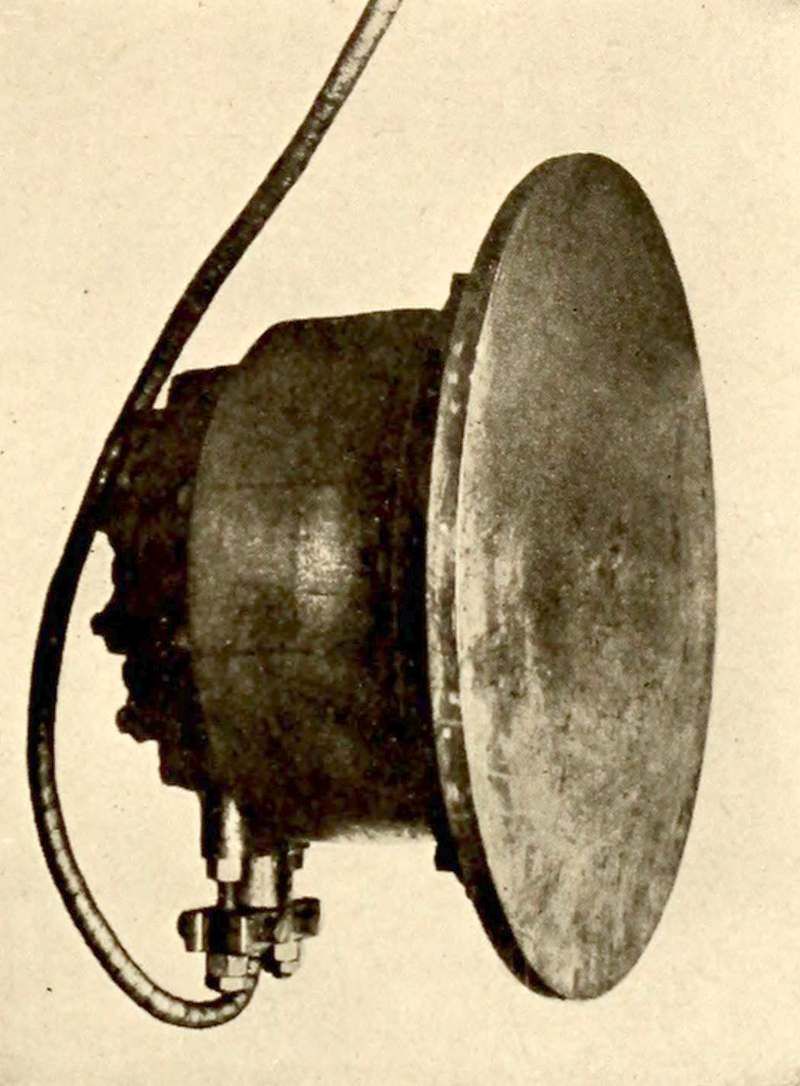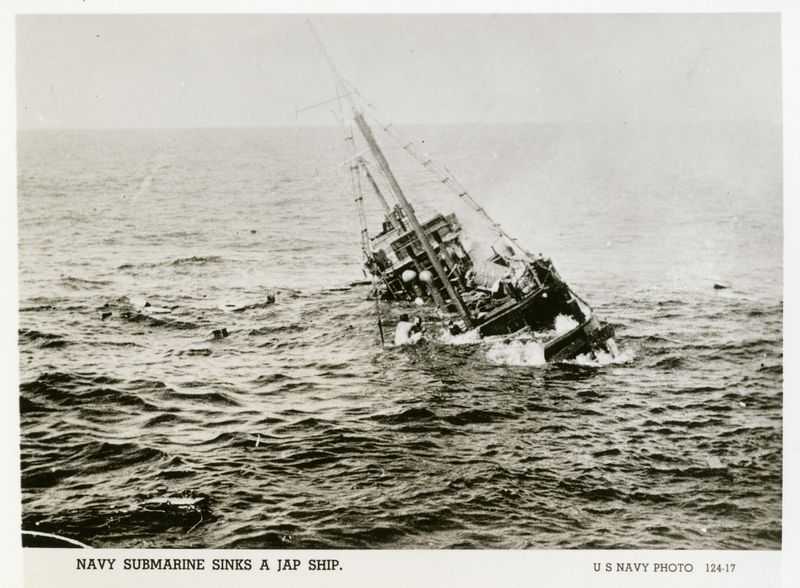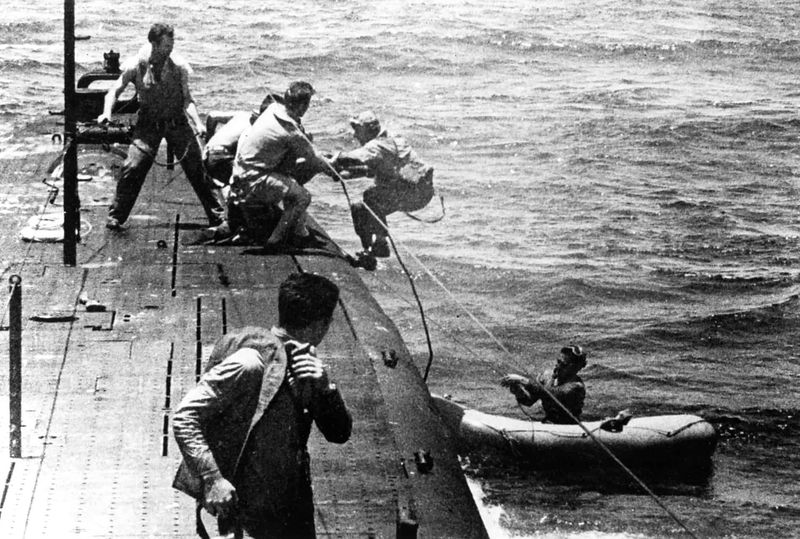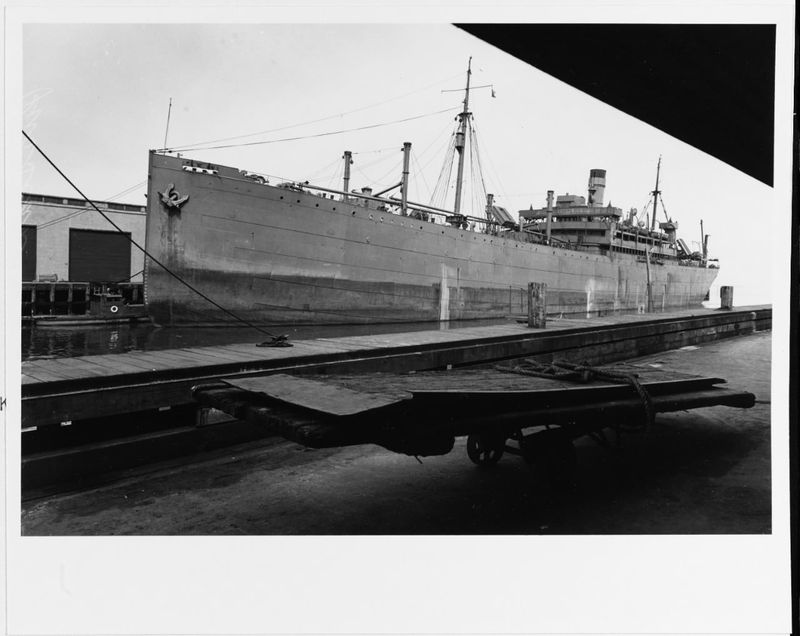In the shadow of World War II, American submarines embarked on one of history’s most daring naval missions. Operation Barney sent nine submarines into the heavily mined Sea of Japan—waters the Japanese considered impenetrable. This dangerous mission wasn’t just about military strategy; it was about avenging fallen comrades and disrupting Japan’s vital supply lines when victory hung in the balance.
1. Avenging the USS Wahoo
Grief and determination fueled Operation Barney’s conception. Vice Admiral Charles Lockwood, commander of the Pacific submarine fleet, designed the mission specifically to avenge the USS Wahoo (SS-238) and its renowned commander, Dudley “Mush” Morton.
The Wahoo disappeared with all hands in October 1943, sending shockwaves through the submarine service. Morton had been a submarine warfare innovator whose aggressive tactics had sunk numerous enemy vessels.
Lockwood refused to let this loss go unanswered, transforming personal anguish into strategic action that would strike at Japan’s most protected waters.
2. Beyond Pearl Harbor Revenge
Contrary to popular belief, Operation Barney wasn’t directly conceived as retaliation for Pearl Harbor. The mission emerged in 1945, years after the infamous December 7, 1941 attack that launched America into the war.
Instead, it represented the culmination of America’s evolved submarine strategy. The Pacific Fleet had transformed from the defensive posture forced by Pearl Harbor into an aggressive offensive force capable of striking Japan’s homeland.
Nevertheless, many submariners carried memories of Pearl Harbor with them, viewing each successful mission as another step toward balancing the scales of justice.
3. Breaching “Hirohito’s Bathtub”
American submariners gave the Sea of Japan a mocking nickname: “Hirohito’s Bathtub.” This inland sea represented Japan’s most secure maritime territory, protected by narrow, heavily mined straits that made it seemingly impenetrable to enemy vessels.
Japan relied on these waters for crucial shipping between the mainland and occupied territories. Military planners believed no American submarine could possibly navigate the deadly minefields guarding the entrances.
Operation Barney’s audacious goal was to shatter this false security by sending submarines directly into Japan’s maritime sanctuary, proving nowhere was beyond America’s reach.
4. Hell’s Bells: The Sound of Survival
A haunting melody of electronic chimes meant the difference between life and death. Operation Barney submarines employed experimental FM sonar systems that detected underwater mines through distinctive audio signals crews nicknamed “Hell’s Bells.”
These eerie sounds created immense psychological pressure. Submariners worked in silent tension, listening for the telltale chimes that indicated proximity to deadly explosives.
One wrong move could trigger catastrophe, making the constant soundtrack of Hell’s Bells both a lifesaver and a nerve-shredding reminder of how close death lurked outside the submarine’s hull.
5. Hydeman’s Hellcats: Three Deadly Packs
Commander Earl Hydeman organized the nine submarines into three tactical groups with feline names reflecting their predatory mission. The Hepcats consisted of Sea Dog, Crevalle, and Spadefish, while the Polecats included Tunny, Skate, and Bonefish.
Completing the formation were the Bobcats: Flying Fish, Bowfin, and Tinosa. Each group would enter the Sea of Japan through different routes, maximizing coverage of enemy shipping lanes.
This division created multiple strike teams that could operate independently yet support each other if needed—a hunting pack strategy that multiplied their effectiveness against Japanese vessels.
6. The Pearl Harbor Avenger Sets Sail
USS Bowfin (SS-287) carried symbolic weight among Operation Barney’s submarines. Launched exactly one year after Pearl Harbor on December 7, 1942, she earned the nickname “Pearl Harbor Avenger” from the moment her hull touched water.
By the time she joined Operation Barney, Bowfin had already completed eight successful war patrols. Her experienced crew made her particularly valuable for the dangerous mission.
During Operation Barney, Bowfin fulfilled her avenging purpose by sinking two crucial Japanese merchant vessels, further crippling the enemy’s ability to supply its forces.
7. Threading the Deadly Needle
Submariners faced their greatest challenge entering the Sea of Japan through the narrow Tsushima Strait. Spanning just 40 miles between Japan and Korea, this passage was laced with sophisticated minefields designed specifically to catch submarines.
Crews navigated with agonizing slowness, sometimes feeling mine cables scrape against their hulls. The slightest miscalculation could trigger an explosion that would crush the submarine instantly at depth.
Each vessel maintained complete radio silence during this passage, meaning a submarine that encountered trouble would disappear without warning—as happened to the unfortunate USS Bonefish.
8. Psychological Warfare Beneath the Waves
Mental fortitude proved as crucial as technical skill during Operation Barney. Submariners endured extreme stress knowing detection meant certain death, with no possibility of rescue in enemy waters.
The constant pinging of sonar’s “Hell’s Bells” created a psychological soundtrack of danger. One submariner later described it as “hearing your own funeral march played on repeat” while another recalled counting the chimes to estimate how close mines were.
Crews worked, ate, and attempted to sleep surrounded by this auditory reminder of mortality, testing the psychological limits of even the most seasoned veterans.
9. A Devastating Maritime Ambush
Japan never expected enemies in their secure waters, making Operation Barney’s submarines lethal predators in an unsuspecting sea. The nine submarines unleashed unprecedented destruction, sinking 28 Japanese vessels in just a few weeks.
Among the casualties were a destroyer, a frigate, and even another submarine. Japanese captains, accustomed to sailing without zigzagging or other evasive maneuvers in these “safe” waters, made easy targets.
Each sinking dealt a double blow—destroying not just the vessel but the irreplaceable cargo Japan desperately needed to sustain its war effort across the Pacific.
10. The Sacrifice of USS Bonefish
Tragedy struck Operation Barney on June 19, 1945, when USS Bonefish (SS-223) and her 85-man crew vanished. Japanese records later revealed anti-submarine forces had detected and depth-charged the submarine near Toyama Bay.
Commander Lawrence Edge and his men fought bravely to the end. The Bonefish had been on her eighth patrol and had already sunk numerous enemy vessels during previous missions.
Her loss cast a shadow over Operation Barney’s success, reminding commanders of the steep price paid for victory. The Bonefish remains on eternal patrol, her sacrifice commemorated by a memorial at the U.S. Naval Submarine Base in New London.
11. The High-Speed Breakout
After completing their attacks, the surviving submarines faced another deadly challenge—escaping the Sea of Japan. Commanders chose the La Pérouse Strait between Hokkaido and Sakhalin for their exit, gambling that its deeper waters would allow safer passage.
Japanese forces, now alert to the American presence, deployed aircraft and patrol boats to hunt the submarines. The American vessels pushed their diesel engines to maximum speed during the nighttime dash to open ocean.
Several submarines reported near-misses with depth charges and aerial bombs during this frantic escape, making their eventual return to Midway and Pearl Harbor all the more triumphant.
12. Lockwood’s Morale-Breaking Strategy
Vice Admiral Lockwood understood that Operation Barney’s value extended beyond sinking ships. The psychological impact on Japanese leadership proved equally devastating.
For years, Japanese civilians and military personnel had been assured their home waters were impenetrable. The sudden appearance of American submarines in the Sea of Japan shattered this illusion of security.
Japanese naval records show the operation triggered panic among shipping companies and forced the redeployment of limited anti-submarine resources. Lockwood had achieved his goal—proving to Japan that nowhere was beyond America’s reach as the war entered its final stages.
13. The Mighty Mine Dodgers
Surviving Operation Barney earned submariners a unique distinction in naval warfare. Vice Admiral Lockwood personally created special certificates honoring crews as “Mighty Mine Dodgers” who had navigated “the most dangerous of war waters.”
These certificates became treasured mementos for veterans. Many submariners considered Operation Barney the most harrowing experience of their service, even compared to conventional combat patrols.
The exclusive brotherhood of Mine Dodgers maintained special reunions for decades after the war, gathering to remember their extraordinary mission and honor those who didn’t return from the Sea of Japan.
14. Paving the Path to Surrender
Operation Barney contributed significantly to Japan’s deteriorating position in the war’s final months. By June 1945, Japan faced catastrophic shipping losses, with Operation Barney delivering a particularly demoralizing blow to their inner sea security.
The mission occurred just weeks before the atomic bombings of Hiroshima and Nagasaki. Military historians note that Operation Barney’s disruption of maritime supply lines compounded Japan’s already desperate situation.
Vice Admiral Lockwood would later stand aboard the USS Missouri during Japan’s formal surrender ceremony, representing the submarine service that had played such a crucial role in bringing the war to its conclusion.
15. Preserving the Underwater Legacy
The USS Bowfin, one of Operation Barney’s most successful submarines, now serves as a floating museum at Pearl Harbor. Visitors can walk through the actual submarine that penetrated Japan’s inner sanctum, touching the same controls used during the daring mission.
In Japan, the Chiran Peace Museum displays letters from kamikaze pilots who were deployed in desperate response to threats like Operation Barney. These contrasting memorials offer perspectives from both sides of the conflict.
Naval historians consider Operation Barney among the most audacious submarine missions ever executed, studying it as a masterclass in combining technological innovation with tactical surprise.
